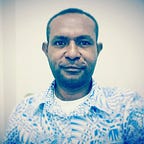Ihu SEZ project moves forward with site improvements and SME incubation programs
Phase II of the billion kina Ihu Special Economic Zone (ISEZ) project is set to commence in February when Prime Minister launches the project at Ihu government station. The project was initially envisioned by the government of PNG back in 2000 when it enacted the Free Trade Zone Act. However it wasn’t until the election of Soroi Eoe as Member for Kikori in 2017 that the dream of a Ihu SEZ began to take shape. The launching of the project by the PM signifies the first step towards land mobilization and infrastructure development on the ground.
District administrative and political support
In 2018, the Kikori District Development Authority passed a resolution approving six critical capital infrastructure projects (CCIP) linked to the development of ISEZ. These projects include; a deep water multi-purpose strategic port facility, a new airport accommodating national flights, new industrial urban town development, water supply and reticulation system, power generation and ring road development.
Each of these critical infrastructure are enablers of the development of ISEZ. Initial scoping and mapping of the ISEZ land and related project sites has been completed with land mobilization and social mapping to now be undertaken during phase II of the work program.
As part of the phase II efforts, the district will be mobilizing communities impacted by the project to be engaged in SME incubation programs. This business training initiative is aimed at empowering villagers to meaningfully participate in the spin off economic opportunities associated with the project.
National Government engagement
The national government has incorporated the ISEZ project has part of the national development agenda. In the 2021 national budget the government allocated K 10 million for the project from NEC Decision of K100 million for 5 years.
Prime Minister Marape will also be launching the K20 million road project connecting the Kikori station to Ihu SEZ site to Kerema. This road link will connect the ISEZ critical capital Infrastructures to the highlands provinces and to Port Moresby .
Phase II development
As indicated in the project inception document, the main activities to be undertaken during Phase II include:
- Social mapping and land mobilization
- Environmental Impact Statement
- Feasibility study
- Physical planning and engineering design
- Promotion and marketing
- Signing of foundational development partners and Financiers.
Each of these activities are prerequisite to the development of the ten industrial zones within the Ihu special economic zone. These industrial zones include:
- Free Trade Zone
- Industrial Park
- Technology Park
- Petroleum Park
- Forestry Park
- Marine Park
- Hotels and Resorts
- Modern village estates
- Recreational Parks
Land mobilization, feasibility studies with project design and costings will be undertaken over the next 36 months. Accompanying this will be work to be undertaken in promoting and marketing the project with the intention of signing up manufacturers, distributors, suppliers and other related business partners. The total cost associated with these activities is estimated to be approximately K4.4 billion.
It is estimated that upon completion of stage one, the project will generate K10 -K12 billion in government revenue and economic benefits over a period of 10 to 15 years.
“The Ihu Special Economic Zone features first major well-planned Industrial Park for Papua New Guinea,” said ISEZ Project Director Peter KenGemar.
“It is strongly anchored on the regions natural resource base of oil, gas, timber, fisheries, agriculture and other minerals. The industrial park strategically compliment’s the Free Trade Zone as the export driven hub for the country and region.”
